
Renaissance Allentown Hotel, view from hotel room window
I was in Allentown, Pennsylvania last weekend for a niece's wedding reception. As my husband and I checked into the Renaissance Allentown Hotel, I was looking forward to a view of the city from our room's fifth floor windows. When we got to the room and I opened the curtains, I was disappointed to find only a view of walls and rooftop. My disappointment turned to surprise as I realized there was a thick carpet of plants on the roof: it was a green roof.
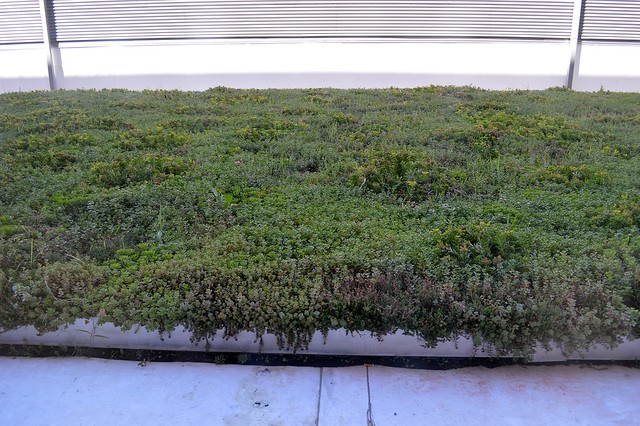
Green roof, Renaissance Allentown Hotel
The green roof is on the adjacent PPL Center, a sports arena and parking garage that opened less than a year ago. It's so new that an aerial view of the site on Google Maps shows the hotel surrounded by an entire block of bulldozed construction zone. While I would have preferred seeing the city, I suppose a green roof is one way to mitigate the lost views; it was certainly better than looking out over a blank, barren rooftop.
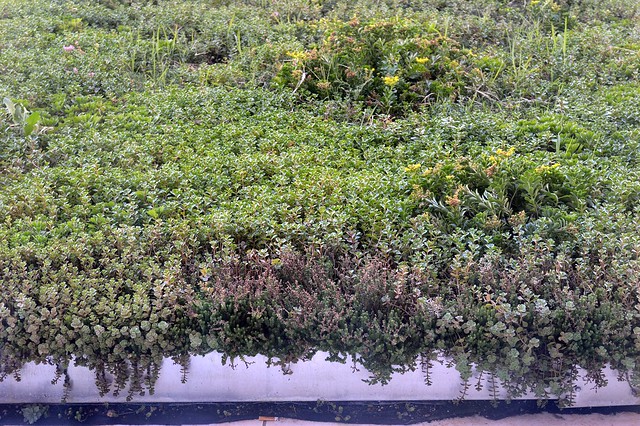
Green roof, closeup
The roof has no public access and is only visible from the hotel's windows. With several windows (like ours) right at the roof level, for privacy and security purposes that's probably just as well. The plants are mostly sedums, a commonly used genus for low-maintenance green roofs. Rooftops are harsh environments and require tough plants that can take sun, wind, and extremes of heat and cold, have shallow root systems or can otherwise survive in a shallow growing medium, and tolerate irregular (and entirely natural) watering. Even with such a limited palette, green roofs can be beautiful and depending on the plant selection, quite colorful when the plants bloom or change color in the fall.
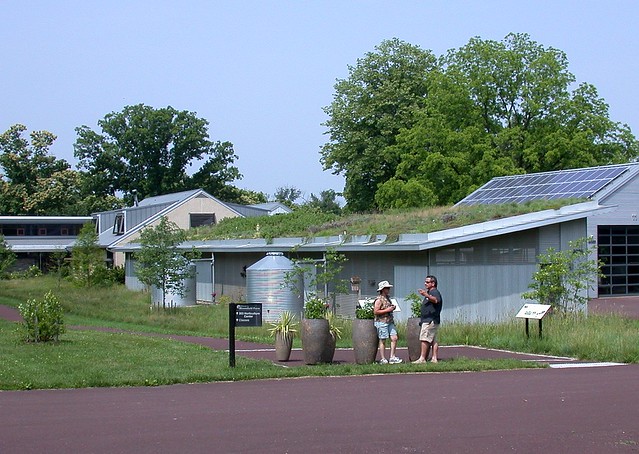
Bloomfield Farm, Morris Arboretum
I saw more green roofs earlier this summer in Philadelphia during a Garden Writers Association tour of Morris Arboretum's Bloomfield Farm, covering garages and storage sheds (and even a birdhouse). They join other "green" elements like solar panels, natural lighting, and cisterns to merit a LEED platinum certification for the arboretum's new Horticulture Center.
 Green roofs come in all sizes (Bloomfield Farm)
Green roofs come in all sizes (Bloomfield Farm)Green roofs help slow, reduce, and filter rain runoff, which mitigates flooding and reduces loads on storm sewers and water treatment plants. They can lower summer cooling costs by shading and insulating the roof, and the plants themselves actually reduce temperatures by transpiration. In the winter they can help lower heating costs by providing an additional layer of insulation. In cities, green roofs add beauty to otherwise bleak urban roofscapes, improving views from office building windows and making decks and other rooftop structures more pleasant while helping reduce the urban heat island effect. Green roofs come in all different sizes and can be utilitarian, as the ones above, or primarily ornamental and even whimsical.

Doghouse, Behnke Nursery in Beltsville, Maryland
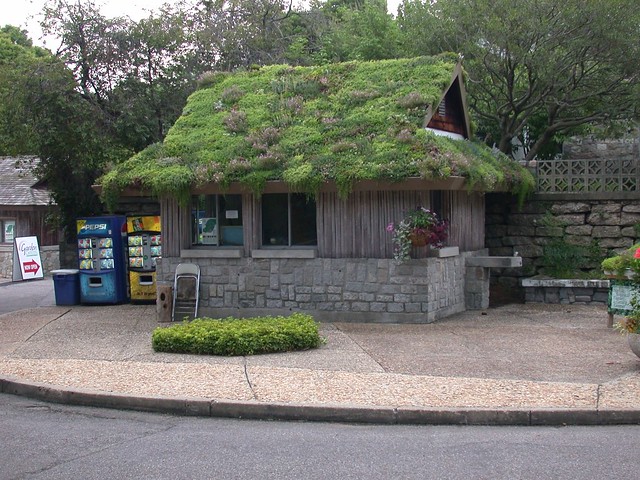
Norfolk Botanic Garden
The largest, most visible, yet least-recognized green roof in Washington, DC is the Smithsonian's Enid A. Haupt Garden, which most tourists (and even local residents) don't realize is planted in just a couple of feet of soil covering a large underground complex that was constructed in the mid-1980's. This green roof is atypical in that it is at ground level, planted with trees, shrubs, and other deep-rooted plants, and is indistinguishable from the surrounding landscape as a roof.
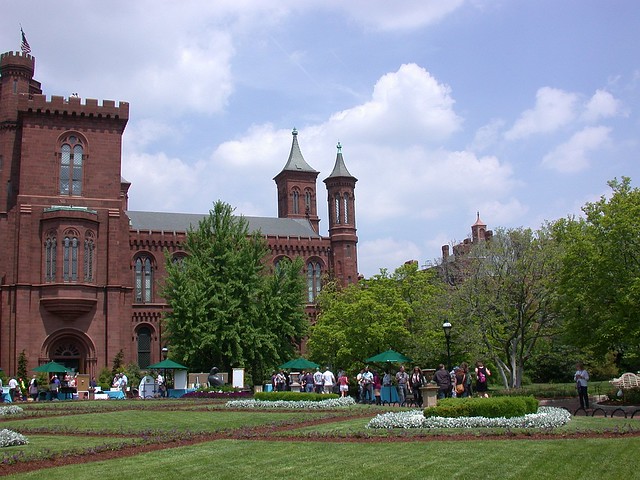
Haupt Garden, a giant green roof

Smithsonian Quad construction, circa 1984
For more information
Green Roof Plants (Timber Press)
Greenroofs.com
Sky Gardens blog
Green Roofs for Healthy Cities
Green roofs in the District of Columbia

No comments :
Post a Comment